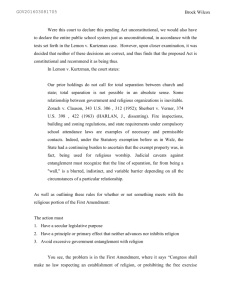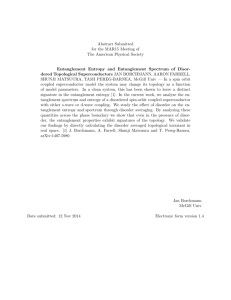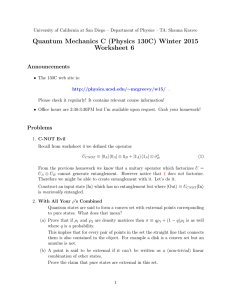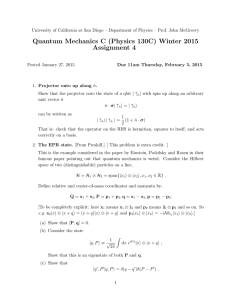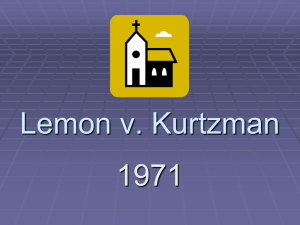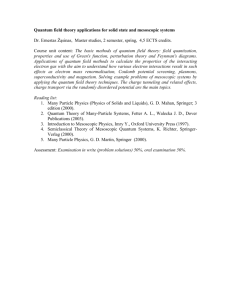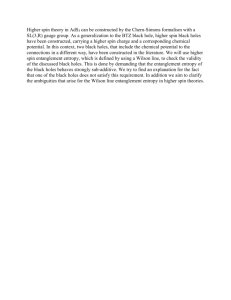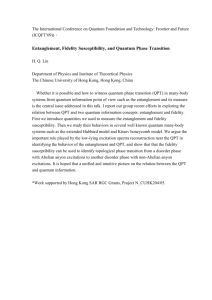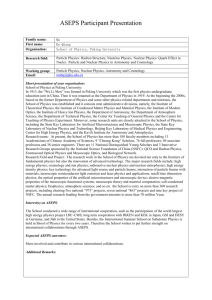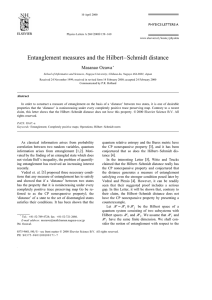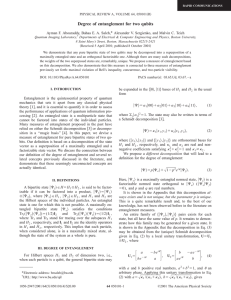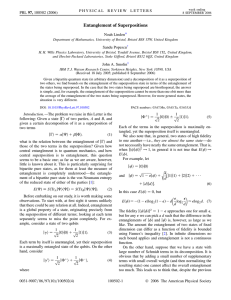Orbital entanglement in mesoscopic conductors
advertisement
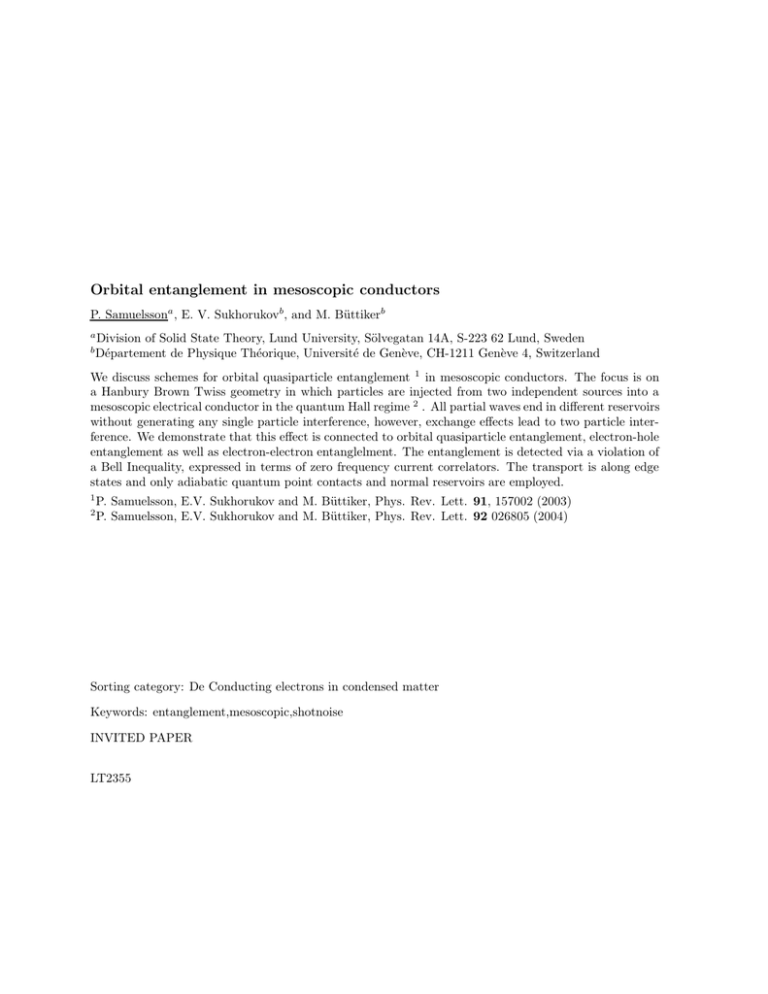
Orbital entanglement in mesoscopic conductors P. Samuelssona , E. V. Sukhorukovb, and M. Büttikerb a b Division of Solid State Theory, Lund University, Sölvegatan 14A, S-223 62 Lund, Sweden Département de Physique Théorique, Université de Genève, CH-1211 Genève 4, Switzerland We discuss schemes for orbital quasiparticle entanglement 1 in mesoscopic conductors. The focus is on a Hanbury Brown Twiss geometry in which particles are injected from two independent sources into a mesoscopic electrical conductor in the quantum Hall regime 2 . All partial waves end in different reservoirs without generating any single particle interference, however, exchange effects lead to two particle interference. We demonstrate that this effect is connected to orbital quasiparticle entanglement, electron-hole entanglement as well as electron-electron entanglelment. The entanglement is detected via a violation of a Bell Inequality, expressed in terms of zero frequency current correlators. The transport is along edge states and only adiabatic quantum point contacts and normal reservoirs are employed. 1 2 P. Samuelsson, E.V. Sukhorukov and M. Büttiker, Phys. Rev. Lett. 91, 157002 (2003) P. Samuelsson, E.V. Sukhorukov and M. Büttiker, Phys. Rev. Lett. 92 026805 (2004) Sorting category: De Conducting electrons in condensed matter Keywords: entanglement,mesoscopic,shotnoise INVITED PAPER LT2355
